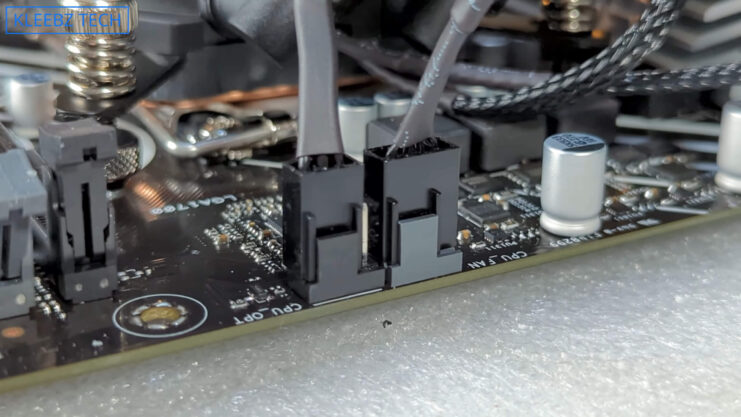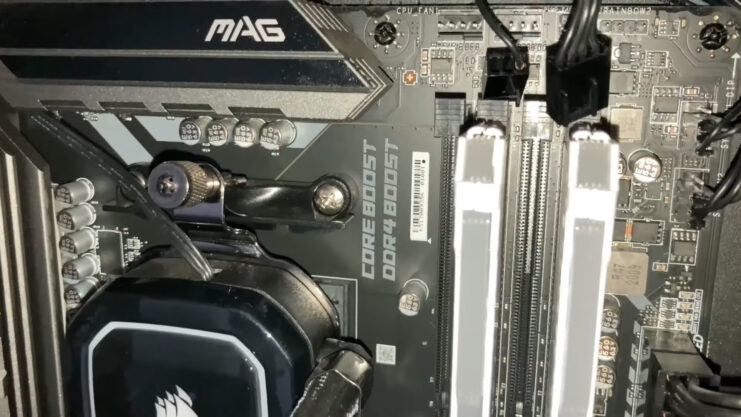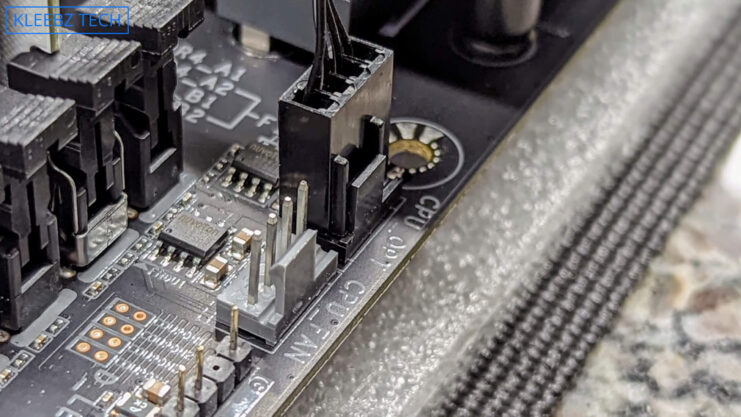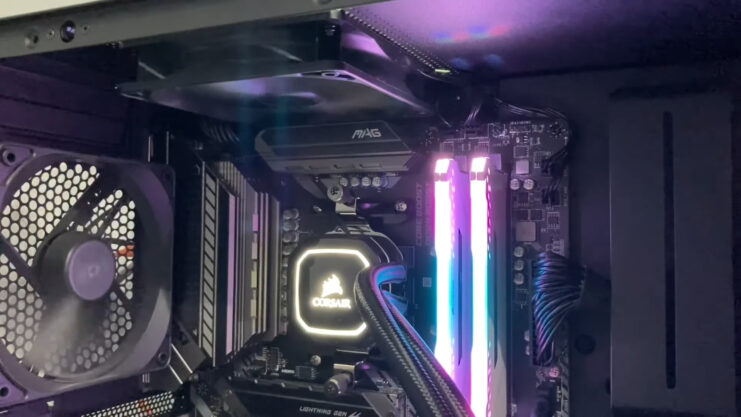The cooling system in a computer is a vital element that guarantees the hardware operates smoothly and efficiently. Central to this system are the CPU FAN and CPU OPT headers on the motherboard, which are crucial in controlling the temperature of the central processing unit (CPU).
Knowing the functions and differences between these headers is crucial for any PC owner, or anyone else interested in building or maintaining one, as it significantly affects the cooling efficiency and overall performance of the system. That is why I would like to commit some time to provide you with my findings on differences between these two.
Key Takeaways:
- CPU FAN header serves as a main connector for the cooler’s fan, while CPU OPT offers the opportunity to add a touch of flexibility to enhance the cooling system.
- A significant distinction between the two headers is their role in system safety and boot processes.
- For high-demand systems, utilizing both headers in conjunction with advanced cooling setups like dual-fan coolers.
The Role of CPU FAN Header

The CPU FAN header is the primary connector on the motherboard designated for attaching the CPU cooler’s fan. This header is crucial for the proper thermal management of the CPU, as it adjusts the fan’s speed based on the current temperature of the CPU.
By doing so, it ensures that the CPU operates within safe temperature limits, preventing overheating that could lead to hardware damage or system instability.
| Feature | Description |
|---|---|
| Location on Motherboard | Typically located near the CPU socket for direct control of the CPU cooling fan. |
| Functionality | Adjusts the CPU cooler fan’s speed based on real-time CPU temperature readings. |
| Connector Type | Usually a 4-pin connector that supports PWM (Pulse Width Modulation) for precise fan speed control. |
| Necessity for Booting | Essential for system startup; motherboards check for a fan connection at this header during the POST (Power-On Self-Test) process. |
| System Protection | Includes failsafe mechanisms that prevent the system from booting or continuing operation if no fan is detected, protecting the CPU from overheating. |
| Adjustability | Allows users to customize fan speed curves in the BIOS or through dedicated software, optimizing cooling efficiency and noise levels. |
The Functionality of CPU OPT Header

While the CPU FAN header is indispensable for connecting the primary CPU cooler’s fan, the CPU OPT (CPU Optional) header offers flexibility for enhancing the cooling system. Designed to function similarly to the CPU FAN header, CPU OPT allows for the connection of a secondary CPU fan or additional case fans.
This is particularly useful in setups requiring more robust cooling solutions, such as high-performance gaming rigs or workstations running intensive applications. The CPU OPT header is typically located near the CPU FAN header, making it convenient for connecting additional fans.
| Feature | CPU OPT Header |
|---|---|
| Primary Use | Connects secondary CPU fan or additional case fans |
| Location on Motherboard | Typically adjacent to the CPU FAN header |
| Functionality | Same as CPU FAN, adjusts fan speed based on CPU temperature |
| Safety Features | Lacks the boot prevention feature of CPU FAN but can offer similar thermal protection through BIOS settings |
| Pin Configuration | Often 4-pin, but may be 3-pin on some motherboards, affecting PWM functionality |
| Ideal for | Enhancing cooling efficiency, especially in high-performance or overclocked systems |
Comparative Analysis
The main difference between the CPU FAN and CPU OPT headers lies in their intended use and the system’s response to these connections. The CPU FAN header is essential for the system to boot properly and includes integrated safeguards to prevent CPU damage due to overheating.
In contrast, the CPU OPT header, while offering the same fan speed control functionality, lacks these integrated safeguards. This means that the system may still boot without a fan connected to the CPU OPT header, but it won’t have the same level of protection as the CPU FAN connection.
Both headers typically feature four pins, supporting PWM (Pulse Width Modulation) fans for precise speed control. However, some motherboards may offer a three-pin CPU OPT header, which can limit the functionality to voltage-based speed control, reducing the precision of thermal management.
Advanced Cooling Strategies

Advanced cooling strategies are essential for those pushing the limits of their systems through overclocking or running high-load applications. Implementing such strategies often involves using dual-fan coolers, all-in-one (AIO) liquid cooling setups, or even custom water-cooling loops.
To achieve the best results, understanding how to effectively use the CPU FAN and CPU OPT headers on the motherboard is crucial. These headers serve as the control points for managing the cooling system’s response to the CPU’s thermal conditions.
Dual-Fan Coolers and AIO Liquid Cooling
For setups that include dual-fan coolers or AIO liquid cooling systems, the CPU FAN and CPU OPT headers can be used in tandem to ensure both fans are adequately powered and controlled. This dual-header approach allows for:
- Balanced cooling by ensuring that both the primary and secondary fans (or the pump in AIO systems) operate in harmony, adjusting their speeds based on the CPU’s temperature.
- The possibility to synchronize the fan speeds, ensuring that the airflow or water flow is consistent and effective at removing heat from the CPU.
PWM (Pulse Width Modulation) Fans
The advantage of PWM fans lies in their ability to offer granular control over fan speeds. This is achieved through their four-pin connectors, which allow the motherboard to adjust the fan speed dynamically based on the CPU’s thermal load. Key benefits include:
- Reduced noise levels, as the fans can operate at lower speeds when the CPU is under light loads, and only ramp up when necessary.
- Enhanced cooling efficiency, as the fans can respond immediately to changes in CPU temperature, providing cooling precisely when it’s needed.
When configuring these advanced cooling setups, it’s essential to:
Utilize the Correct Headers
Ensure that PWM fans are connected to headers that support PWM control. While the CPU FAN header is typically configured for this by default, the CPU OPT header should also support PWM if the motherboard manufacturer has designed it that way. This ensures that both fans in a dual-fan setup or the fan and pump in an AIO setup can be precisely controlled.
Adjust BIOS Settings
Use BIOS to fine-tune the fan curve settings for both the CPU FAN and CPU OPT headers. This allows builders to specify how aggressively the fans should respond to temperature changes, balancing cooling performance with noise levels.
Consider the System’s Overall Thermal Dynamics
When planning the cooling strategy, think about how air or liquid will flow through the system. This includes the placement of intake and exhaust fans, the direction of airflow through radiators, and ensuring that there’s no recirculation of hot air within the case.
FAQs
Do I need a heatsink for my CPU?
Yes, a heatsink is essential for your CPU. It dissipates the heat generated by the CPU, preventing overheating and ensuring stable performance.
Does CPU fan size matter?
Yes, CPU fan size matters. Larger fans can move more air through the heatsink with less noise compared to smaller fans. However, compatibility with your PC case and motherboard layout is also important.
Can a PC run with 2 fans?
Yes, a PC can run efficiently with 2 fans, typically configured for intake and exhaust. This setup helps maintain a good airflow, cooling the system effectively.
Does thermal paste expire?
Yes, thermal paste can expire or degrade over time, losing its effectiveness in transferring heat from the CPU to the heatsink. It’s recommended to replace thermal paste every few years or when temperatures seem higher than normal.
The Bottom Line
These components are instrumental in maintaining the optimal temperatures for the CPU, a task that demands a nuanced understanding of their differences and functionalities. For those of us engaged in PC building or maintenance, grasping these aspects is not just beneficial—it’s essential.
When we are aware of these differences, we can ensure that my builds not only run efficiently but also stay safeguarded against the risks of overheating. This vigilance allows me to meet, and often exceed, the performance expectations associated with modern computing tasks.

